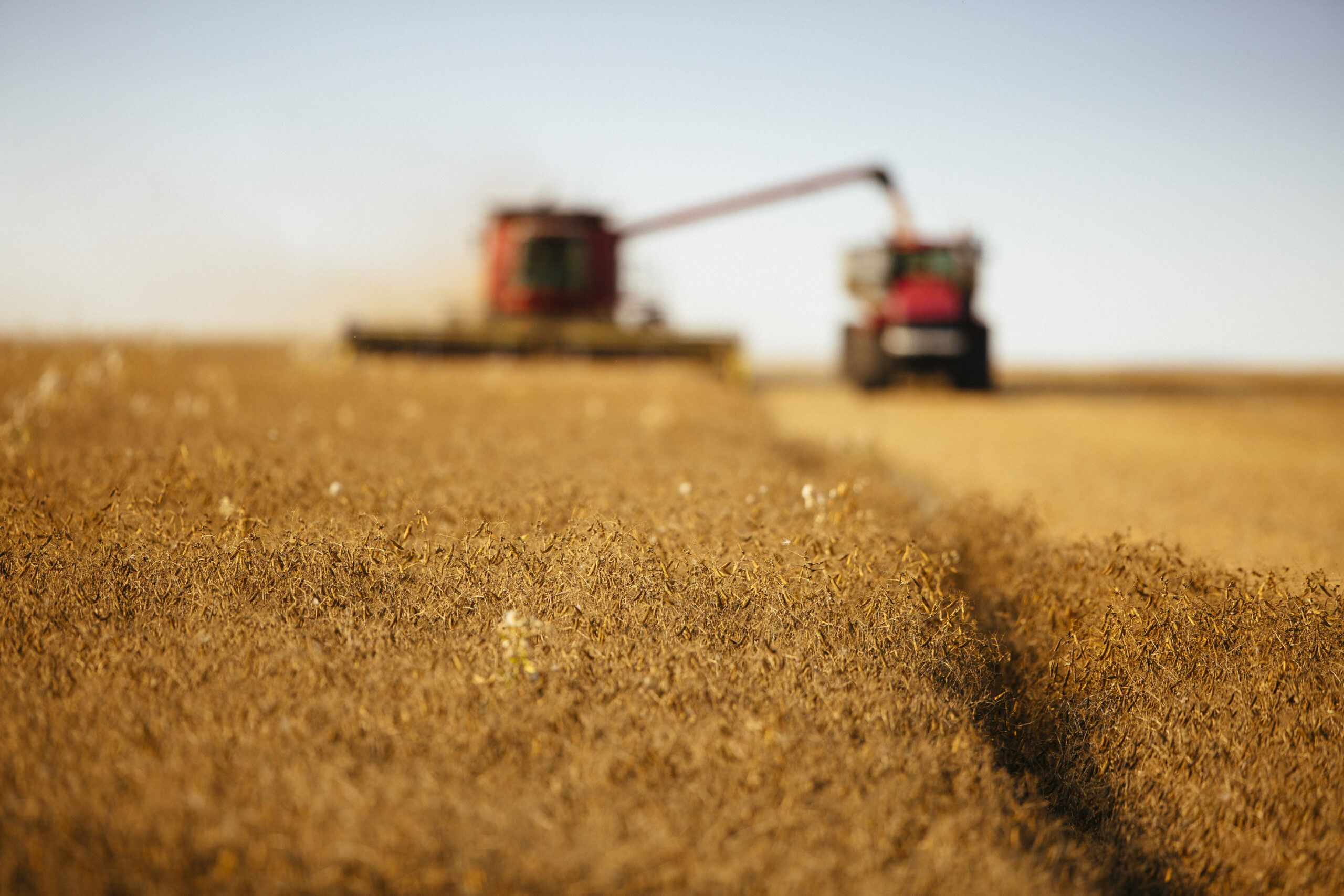Adapted from article by Donna Fleury, P.Ag.
Quality Matters
Chickpea size and colour is very important for quality. It is important to time a desiccant operation properly to make sure the colour has changed and the seeds are not green. Deductions are implemented if immature green seeds comprise more than 0.5% in Kabuli, and 1% in Desi chickpeas.
Other factors that negatively affect quality are Botrytis or Sclerotinia in the sample, admixtures, small seed size, and a lack of seed uniformity. Although chickpeas are a bit taller, pay attention to cutting height to reduce the risk of earth-tag (or soil) on the seeds.
Swathing or Direct Combining Chickpeas
Chickpeas are considered ready to harvest when the majority of the plants are yellow and most pods are mature (yellow to brown in colour). At this stage, the top of the plant may still be green. However, if the plants are left standing too long following maturity there is a risk of pod drop. This can occur if the small stem attaching the pod to the plant breaks. If left in the field too long following maturity, seed weathering can reduce quality. Currently over 90% of chickpeas are straight cut.
The best yields for chickpeas are obtained when the crop is left standing and then straight combined. Chickpeas do not cure well in the swath, resulting in high green seed if swathed or desiccated too early. Swathing may result in lower yield, higher green seed, and seed infection from both fungal and bacterial diseases, resulting in reduced quality and yield. Desiccation is a better alternative to swathing for reducing the amount of residual green material in the field prior to harvest. However, you have to wait until stems are green to brown in colour, pods are mature (yellow to brown in colour), and 80-90% of the original leaves have dropped. The more the crop has a chance to mature naturally, the better the yield and quality. Depending on the year, frost may act as a natural desiccant depending on the stage of the crop.
Chickpeas have stiff stems and a relatively upright growth habit, with pods developing several inches above the ground. Pods are quite shatter resistant, although shattering of maturing pods may occur under drought conditions. Pods and seeds often mature before the stems and leaves. If straight cutting equipment is not available, chickpeas can also be swathed immediately ahead of the combine. Although swathing is not recommended, if swathing, swath the crop when plants are slightly damp which should result in the formation of an intact swath that is less susceptible to wind movement and therefore reduce pod losses.

Harvest Aids: Desiccants and Pre-Harvest Perennial Weed Control
Various chemical harvest management tools are available to aid in the preparation for combining. It is important to select the right product for the right crop and the intended outcome. Is it crop desiccation and dry down, or pre-harvest perennial weed control that is the main focus? These products are not the same – know what you are planning for and make sure to select the right product, follow label directions, and timing of application. Harvest aid products vary in speed of activity, efficacy, and pre-harvest intervals.
For crop rapid dry down of green material to coordinate harvest timing, desiccant or herbicide with ‘harvest aid’ uses is the product to choose. The whole goal of desiccants or harvest aids is to make sure the crop is dry and goes through the combine efficiently. Pre-harvest perennial weed control products are designed for controlling perennial weeds or heavy green annual weed pressure prior to harvest, they are not intended to speed up maturity or dry down crop faster.
Combining
The best time to combine chickpeas is around 18% moisture content. Chickpeas must be handled carefully to prevent seed chipping and cracking and maintain quality, especially the larger seeded Kabuli types, so reducing combine speed is recommended. Combine settings for chickpea should start with those used for dry pea. Wider concave settings may be required for the larger seed types and increased cylinder or rotor speed may be needed to remove the seed from the pod.
Avoid combining chickpeas that are wet or immature. When straight cutting, air or pick-up reels may reduce harvest loss compared to bat reels. Make sure when transferring grain through augers and into bins that it is not subjected to high speeds or lengthy falls.
Chickpeas should be stored at 14% moisture or less. If harvested in hot, dry conditions, chickpeas should be aerated to cool them down prior to storage.


